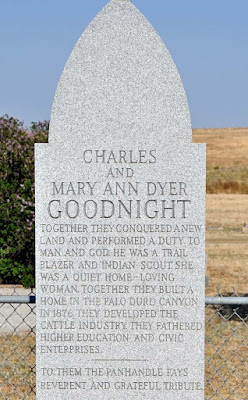
History is all around us. Sometimes, history can be staring you right in the face and you don't know it. Take this live oak tree for instance. Located along the banks of Hamilton Creek in the small town of Burnet in Central Texas, it overlooks the Highlander Inn's parking lot on Highway 29. Other than having an unusual shape, it is unremarkable and hundreds of people park next to and under its limbs with not a second thought or glance. Actually though, it is a living memorial to the Comanche
Indians, the fierce tribe of Native Americans who caused the early settlers much pain, anxiety and death.
The Comanche traveled with the seasons, spending their summers on the high
plains of the Panhandle and their winters in Mexico. Each fall, they passed
through Central Texas and one of their favorite camping spots was along
Hamilton Creek. According to written reports from early settlers, the Indians would come in the night
and set up their tepees along the banks of the creek. After a few weeks, they would pack up and
leave as silently as they had come.

The Comanche liked Hamilton Creek for its flow of cool, clear water as well as for the native pecan trees which lined its banks. Flint and other hard rocks were also available in large quantities for the making of weapons and tools. While camped along the
creek, the women gathered and shelled pecans. The meats were ground into a meal
and made into cakes. The warriors spent the time chipping arrowheads and hunting game.
The Comanche had several trails they traveled from the Panhandle to Mexico and back. At the better camping spots along a trail, a
sapling-size tree was bent to the ground and tied down to serve as a marker. As
the tree grew, the limbs would grow upwards, but the trunk maintained this horizontal position. Such is the configuration of this live oak now known as "The Indian Marker Tree" by those in the know. An estimated 300 years old, it is a living monument to the presence of
these early Native Americans in Central Texas.

































































